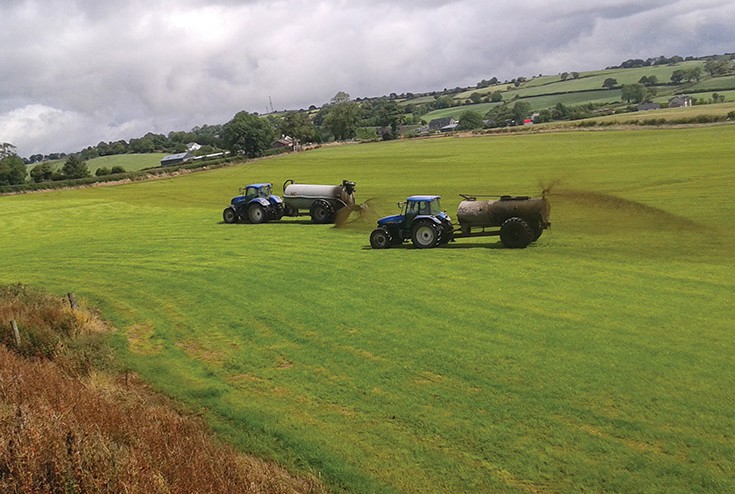
Modern farming changes on an annual basis as new techniques are found all over the world and implemented into the agricultural industry.
Ireland would be regarded as being a ‘bit behind’ when it comes to implementing these techniques, but that cannot be said about all farmers on this island.
Located in Bessbrook, Co Armagh are the Harpur family who farm in the region of 580 acres of land. The Harpurs are dairy farmers and have been for many generations.
These days, Roy and his sons David and Robert are the latest generation of the family to be involved in farming and it was David who spoke to Irish Tractor & Agri about the techniques they use to get the best yield from their herd.
Zero grazing is considered a relatively new process over here, but not for the Harpurs who have been using the technique since 1999 and have found it very beneficial.
A zero-grazing system is where grass is mechanically mown and brought to cattle. Used for many years in parts of mainland Europe, it is currently used on only a small number of Irish farms.
Its appeal is that it allows cattle to consume fresh grass from fields that are too far away, or are separated by a busy road, to be included in the grazing rotation.
Zero-grazing can also play a role when utilising fields too wet for grazing, provided the machines employed have sufficiently wide wheels to safely distribute their load.
In some cases it is likely that the herd will graze conventionally for most of the season, but receive zero-grazed grass when useful.
“We would have 450 cows and are milking 370-400 at any given time on a three cycle daily basis and we have seen a significant increase in the milk yield since we started doing it,” said David.
“We are farming 580 acres of land, but some of this is taken and would be eighteen miles from the home place, so that is a lot of travelling.
“Aside from dairy farming, tillage is another part of our business as winter and spring barley and wheat would be harvested during the year.”
The Harpurs manage to include high quality fresh grass by cutting and bringing fresh grass indoors every day. The 450-strong milking herd are housed in two groups — one group is called the ‘highs’ and they are cows that are less than 150 days in milk, while the ‘stales’ group, those cows mostly calved over 150 days are in another shed. In between both sheds is a state-of-the-art 34-unit Dairymaster milking parlour that runs for two and half hours morning and evening and, again, for two hours at night.
Each day during the spring and summer, five acres of grass is cut every day for the entire milking herd and heifers, while the cows are also on a TMR diet. In between cuts, the grass gets 1,500 gallons of slurry per acre and one and half bags of CAN/acre (over 40 units of bagged nitrogen per acre every four weeks).
Grass is cut on owned and leased land and travels into the farm from fields that are two, three, five and seven miles from the home farm. The leased land 18 miles away is harvested for silage.
“We would have 30 dry cows out on the land and that’s it, the rest are in the sheds at the yard. In 2012, we constructed a nine-bay shed, which has cubicles for 240 heifers at different growth stages, a covered feeding area and a covered handling area.
“We have a cut and carry system which sees us use the Ed Walley designed trailer imported from Cheshire. The mower is left in the field and, each time, we pull the trailer in beside the mower and cut up to seven tonnes of grass dry matter (35 tonnes fresh) to fill up the trailer.”
The feed cost of zero grazing grass is €120 per tonne of dry matter regardless of what way you twist the figures, with not much difference north or south and David admits that it might not be for everyone.
“You must account for establishment costs, variable costs, machinery running, land charge, etc, and the €120 per tonne is only achieved when you assume a dry matter yield of 12 to 14 tonnes of DM/hectare which is a decent average figure. This is comparable with the cost of grass silage.”
Two years ago, the Ulster Grassland Society held its annual farm walk at the Harpurs farm, which allowed farmers come along and see the process for themselves.
The Ulster Grassland Society (UGS) is for those who have an interest in grassland production and utilisation. It brings together farmers, advisers, lecturers, researchers and technical members of the agricultural industry and is the biggest grassland society within the UK with around 700 members.
David Harpur
Divernagh Dairies
Divernagh Road,
Bessbrook,
Newry, Co Down.
Taken from Irish Tractor & Agri magazine Vol 3 No 7, August 2015